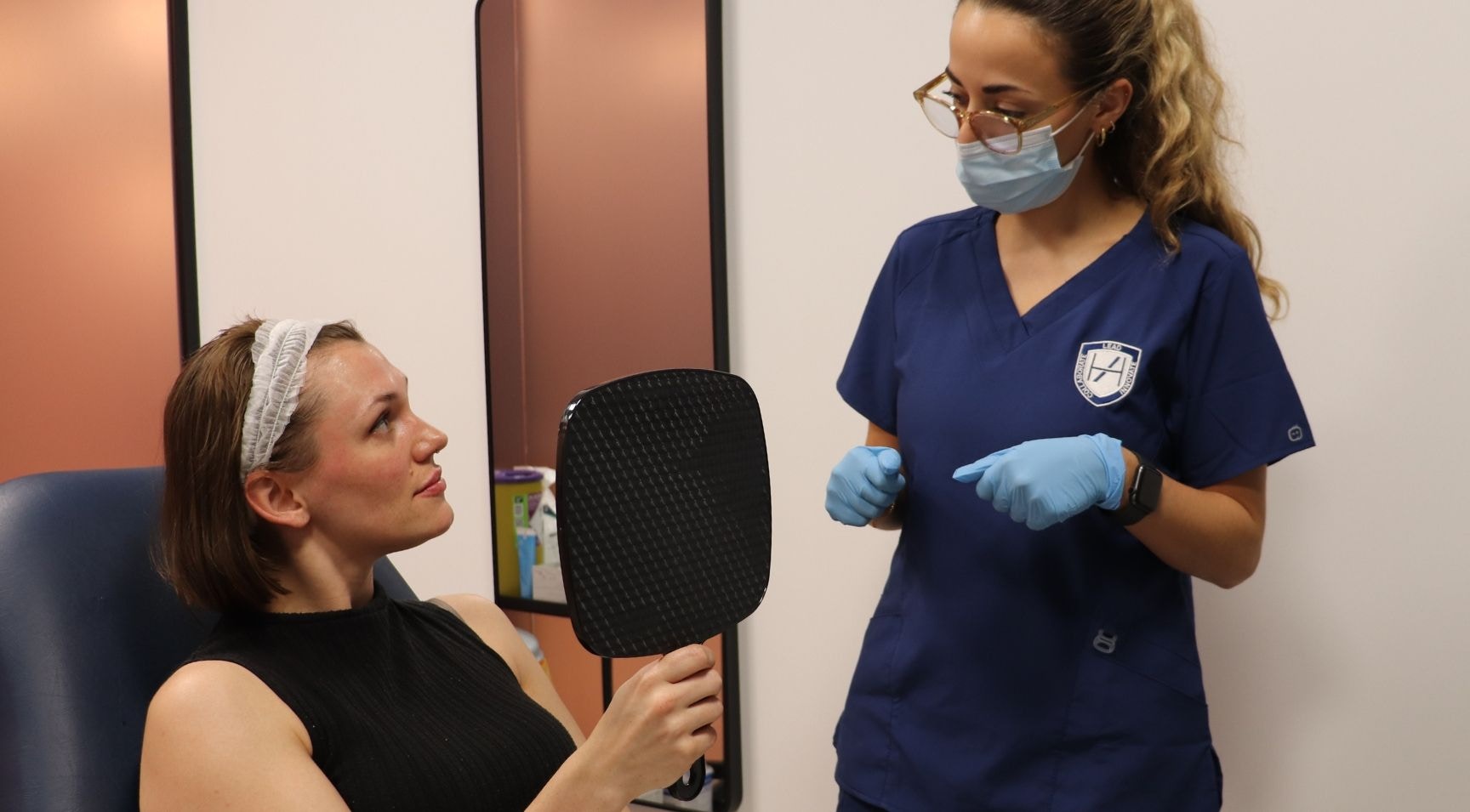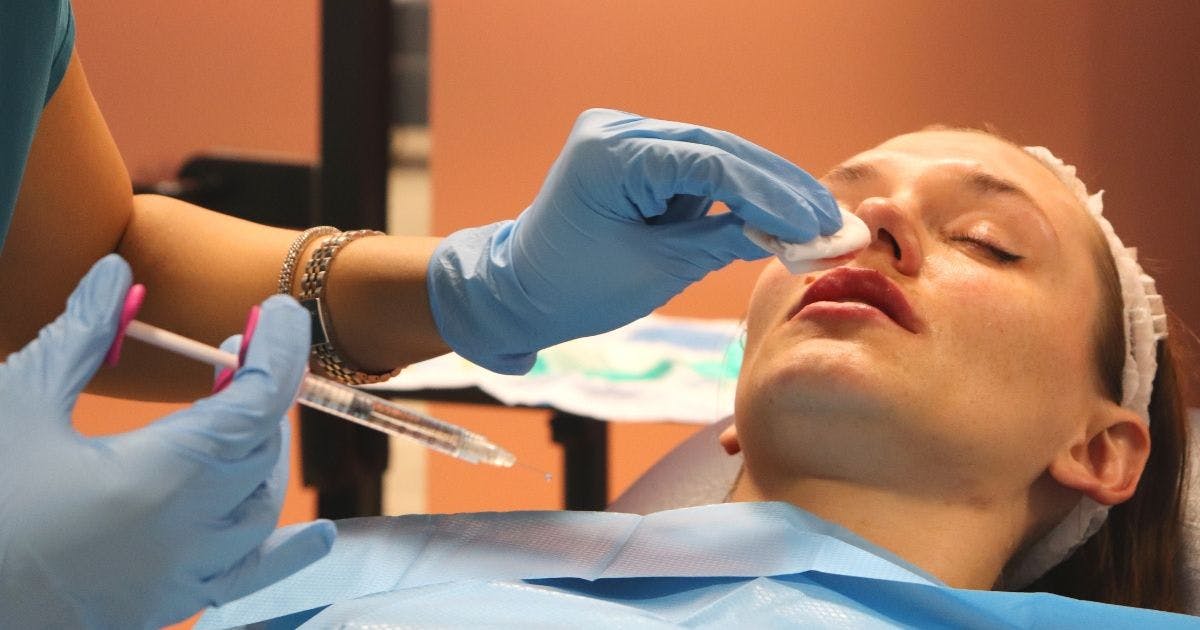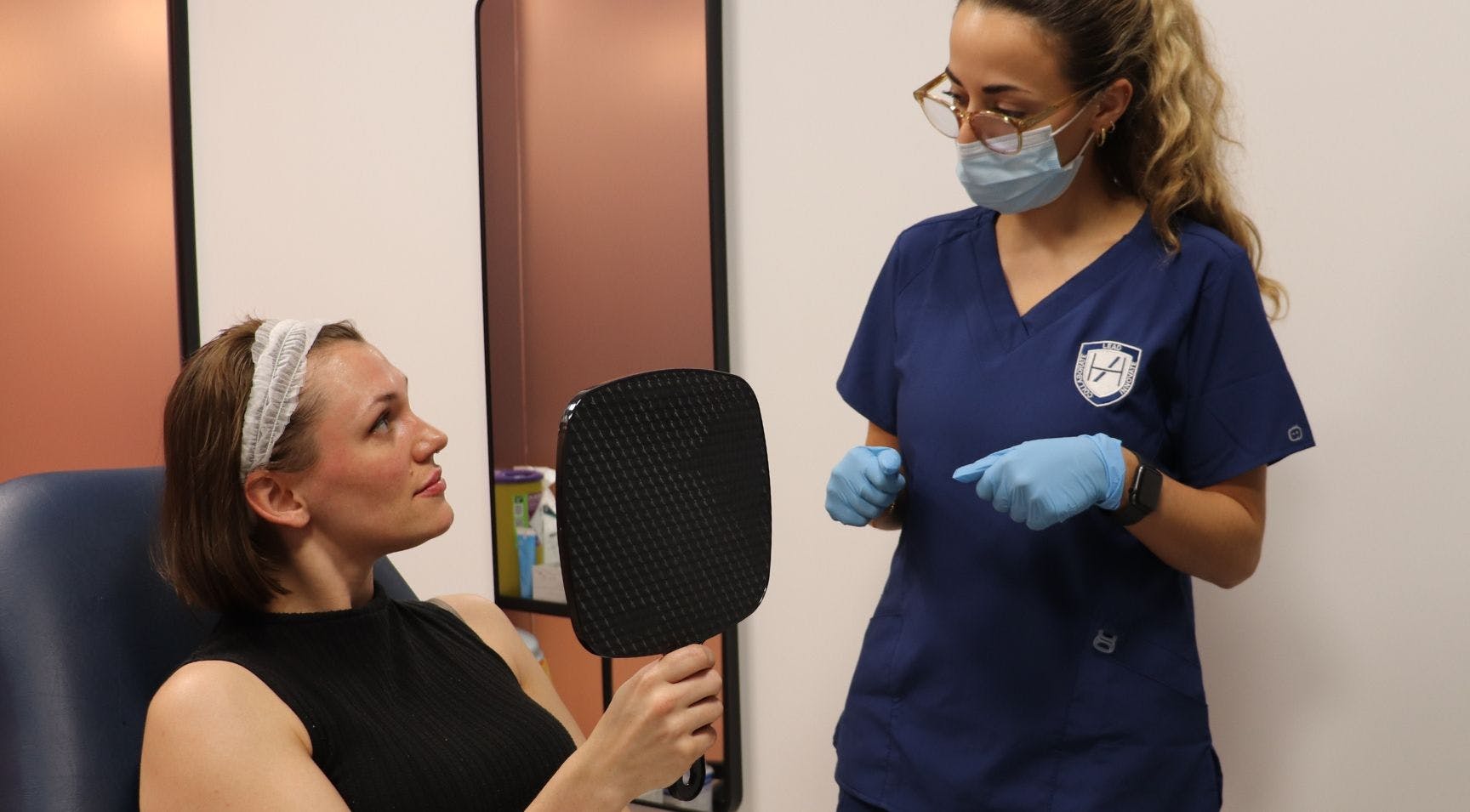The Injectors Guide to Filler Aftercare Advice

Delivering filler aftercare advice is a crucial step of the treatment journey for injectors and patients alike. It reduces the risk of complications and can help to manage the patient’s expectations of results and recovery time.
This article covers everything from standard aftercare advice to addressing common myths. Aesthetics specialist and clinical trainer, Dr Reneela Rai also shares her experiences and unique aftercare tips.
Pre-appointment advice is crucial
Before carrying out any treatment, “it’s important to advise patients against certain activities”, Dr Reneela stresses.
“They ideally need to avoid any caffeine, intense exercise and excessive alcohol the day before and the day of the treatment,” she suggests. "In my practice, I’ve had to turn two patients away due to this!”

Warn patients against flying after injectable treatments
Before their appointment, it’s useful to find out if your patient has any plans to fly soon. If so, inform them to schedule their injectables for a more suitable time. This is because they shouldn’t fly immediately after filler treatment.
Patients should wait a minimum of one week, ideally two when looking to book their filler appointment before flying. Inform them that there’s a chance of increased swelling from cabin air pressure. Furthermore, and this is mainly anecdotal, it may increase the risk of bruising. On the rare occasion, a complication or vascular event occurs, you can also manage it while they’re still at home.
What should patients expect after filler treatment?
Recovery time is always dependent on the individual. It’s best to warn the patient that they may experience a couple of days of minor bruising, discomfort and swelling. This should resolve within a few days.
How long treatment results last is dependent on many factors, so it is better to suggest a range. Factors affecting longevity of results include:
- Patient physiology
- Product selection
- Technique
- Treatment area
- Patient perception bias.
Recovery time is also patient-dependent. For filler treatments initial bruising and swelling recovery is variable. Most settle between 1-3 days, but it can take longer.

Aftercare advice that applies to all filler treatments
The following information applies to all filler treatments and should be delivered before and after every appointment.
Patients should avoid the following for a minimum of 24 hours post-treatment:
- Makeup
- Excessive alcohol
- Strenuous exercise
- Aspirin
- Ibuprofen
- Massage
- Facials
- Touching the injected site
- Used or unclean pillowcases when sleeping.
Dr Reneela notes that in her experience, a piece of advice that trainees often miss is the “importance of not touching the face, or applying any products or makeup to the skin, as this can increase chances of infection.” Maintaining an aseptic technique is vital for minimising the risk of infection.
Avoiding massage is usually contentious. Massage can affect the treatment result and introduce infection. Most practitioners suggest no massage for at least 24-48 hours so that the needle entry points can heal.
Filler aftercare advice for specific areas
Mid-face filler treatment aftercare advice
The mid-face includes medial and lateral cheek filler as well as the piriform fossa.
Dr Reneela encourages patients to “clean their phones and wipe sunglasses or glasses to reduce the risk of infection.”
As with most dermal fillers, recovery time for the medial or lateral cheek, or the piriform fossa averages 1-3 days.

Aftercare for tear trough filler patients
For tear trough fillers, the estimated recovery time is 1-3 days. Bruising and oedema are common initially and may be persistent.
Perioral filler treatment aftercare advice
Perioral refers to the area around the mouth. Popular treatments in this region include, lip fillers and smokers’ lines, also known as barcode lines. It is important to keep treated areas clean, due to proximity with the mouth.
Smokers’ lines or barcode lines filler
For fine line filler, a recovery time of 1-3 days is estimated. However, bruising and swelling can be quite persistent here.
Lip filler
It’s estimated that lip filler treatments require 1-3 days of recovery time. However, swelling can be persistent, so recovery time can be longer and up to 2 weeks, until the final result is reached.
Aftercare advice for lower-face treatment
Lower face treatments include the chin, jawline contouring and marionette lines.
Marionette lines
Crucially, marionettes and nasolabial folds are more profound in older patients, who may be at a higher risk of bruising. Always explain this to your patients during their consultation and ensure they are timing their treatment right. If they have any big events coming up, they should allow an appropriate amount of time for recovery.
Signs of filler-related complications
Tell your patient, if they notice any areas of their skin becoming pale or grey to seek urgent advice from you. Furthermore, if they are experiencing any ongoing or worsening pain, they should contact your clinic. Though this is very rare, it could potentially be a serious vascular or infective complication that requires urgent attention.
Any filler-related lumps that occur will usually settle over the next four weeks. Do explain that this may vary for some patients. However, if a lump is causing them distress or is not resolving, ensure the patient knows to seek advice.
Build your reputation with an outstanding level of service
The Level 7 Diploma in Botox & Fillers is designed to provide you with more in-depth training and one-to-one mentoring time with patients. All of which takes place in a real-life working aesthetics clinic. It will help you learn how to deliver outstanding skills in communication as well as treatment delivery.
A Master’s level, Ofqual-regulated qualification, our Level 7 will equip you with comprehensive aesthetic medicine knowledge.
Our Level 7 Trainee Handbook also includes a section dedicated to conducting in-depth consultations. This comprises sample forms, including one relating to aftercare advice, so you have a solid idea of what information to provide.
For more information on our range of medical aesthetics training courses, reach out to our Courses team. Book a call to receive personalised advice on finding the best aesthetic medicine education for you.
All information correct at the time of publication
Download our full prospectus
Browse all our injectables, dermal fillers and cosmetic dermatology courses in one document
By submitting this form, you agree to receive marketing about our products, events, promotions and exclusive content. Consent is not a condition of purchase, and no purchase is necessary. Message frequency varies. View our Privacy Policy and Terms & Conditions
Attend our FREE open evening
If you're not sure which course is right for you, let us help
Join us online or in-person at our free open evening to learn more
Our Partners













STAY INFORMED
Sign up to receive industry news, careers advice, special offers and information on Harley Academy courses and services

